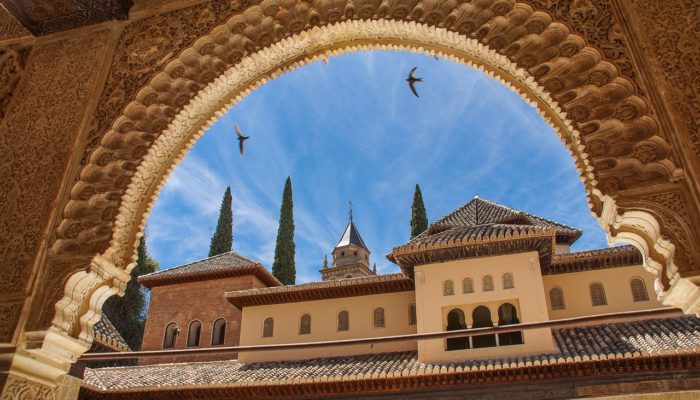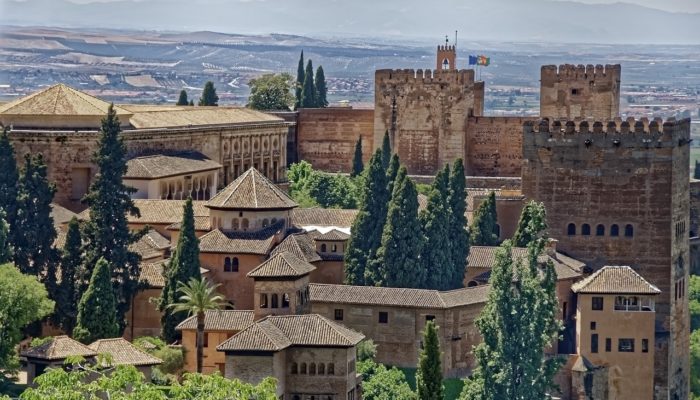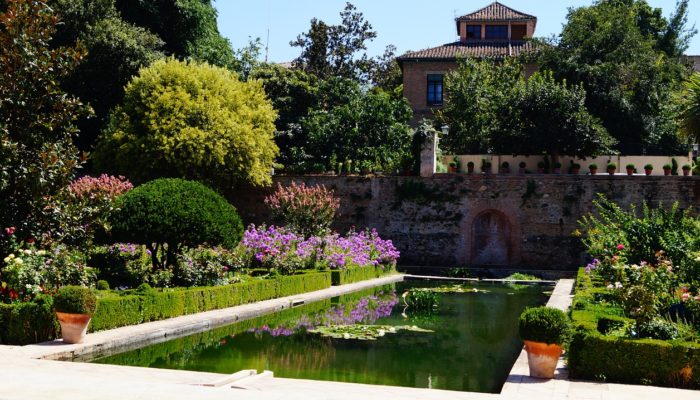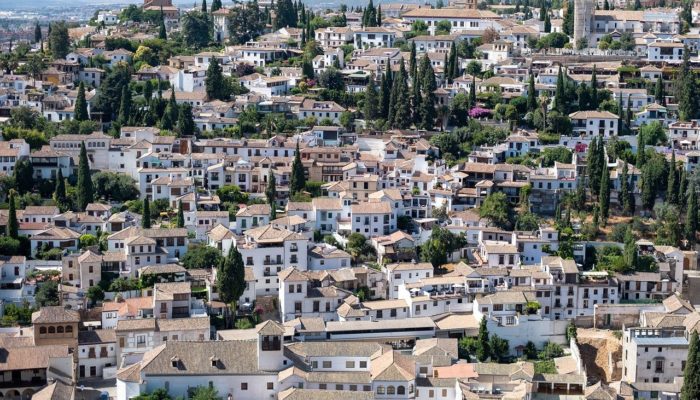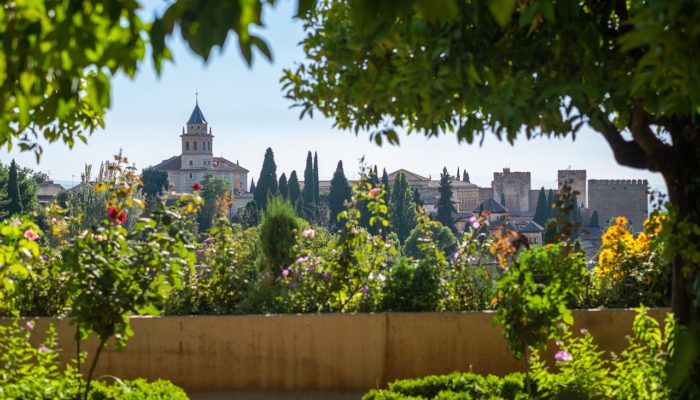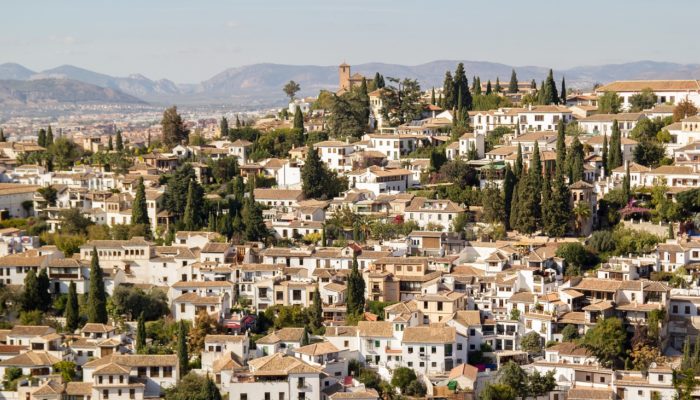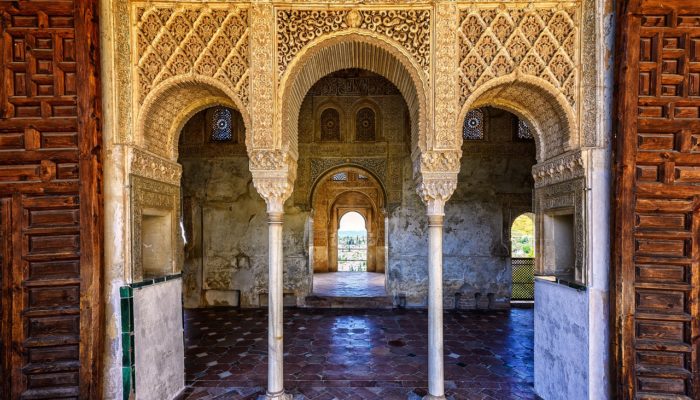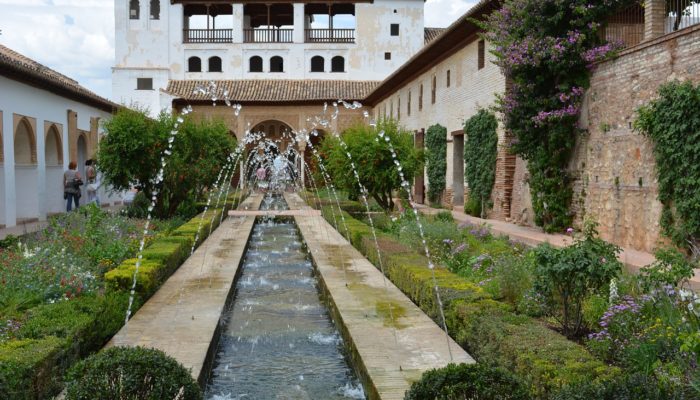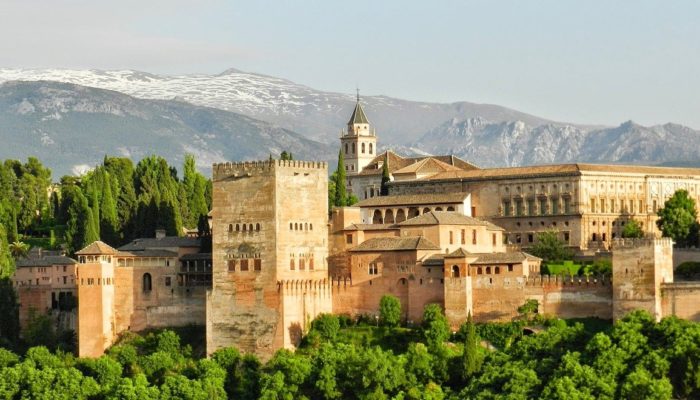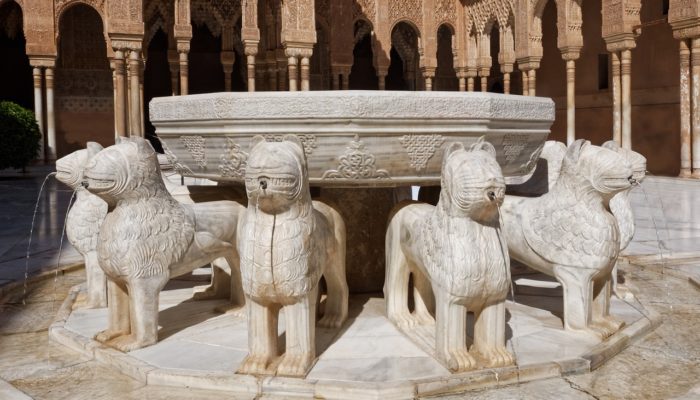
Granada – Pearl at the foot of Sierra Nevada
“Quien no ha visto Granada, no ha visto nada!”
(“If you haven’t seen Granada, you haven’t seen anything!”).
Granada, a truly wonderful city that reveals itself to the visitor in all its beauty during walks through the Albaicín neighbourhood with its steep, narrow streets or through La Alcaicería, the neighbourhood of the old Moorish markets. The Arab past still presents itself today in the Carmen de Los Mártires, a park built over Muslim dungeons, or in El Bañuelo, the Arab baths, which fortunately were not destroyed after the reconquest by the Christians. Christianity also eventually brought the magnificent Cathedral and the Royal Chapel (Capilla Real) to Granada. Read on to find out which places and sights you should not miss during your visit to Granada:
First, of course, the Alhambra, Granada’s landmark, also called the Red Palace, with the Nasrid Palaces and the world-famous Generalife. Then the Capilla Real, the Royal Chapel in Gothic style. Follow the Paseo de Los Tristes, the “Way of the Sad”, always shaded by the Alhambra, with its four historic bridges: the Cabrera and Espinosa bridges, both of Christian origin, and the Chirimías and Algibillo bridges, which date back to the time of Muslim rule. In the many side streets leading down to the promenade, there are many religious buildings, museums and mansions, as well as El Bañuelo, one of the most important Arab baths in Spain, the Casa del Castril, and the convent of Santa Catalina de Zafra.
Be sure to visit La Alcaicería, the reconstruction of the former silk market destroyed by a terrible fire in 1843, in the old town, next to the Bib-Rambla, and very close to the Cathedral and the Royal Chapel. And of course, Calle Mesones, the beautiful street in the old town with its many shops and restaurants.
Then there are the replicas of the Arab baths in the Hamman Al Andalus in Calle Santa Ana, the El Bañuelo Arab baths in Carrera del Darro nº 31, the Church of San Nicolas, the Corral del Carbón, the oldest building left by the Arabs, and its handicraft shops, the Church of the Ana and its famous minaret, the Puertas de la Murallas or the four historic gateways of the old quarter, the beautiful parks of the Carmen de Los Mártires, south of the walled enclosure of the Alhambra, covering an area of just over seven hectares!
And of course, one should not miss the Gitanos’ quarter, the Sacromonte, the “Holy Mountain”, in the hills above Granada, in whose caves along the narrow street Camino de Sacromonte rousing flamenco shows take place. The Sacramonte district is also home to the Museo Cuevas del Sacromonte, with its houses carved into the rocks, and the Abbey (Abadía) the main monument of Granada’s Sacramonte.
For Granada in Andalusia, what is already written in the entrance above really applies:
“Quien no ha visto Granada, no ha visto nada!”
(“If you haven’t seen Granada, you haven’t seen anything!”).
